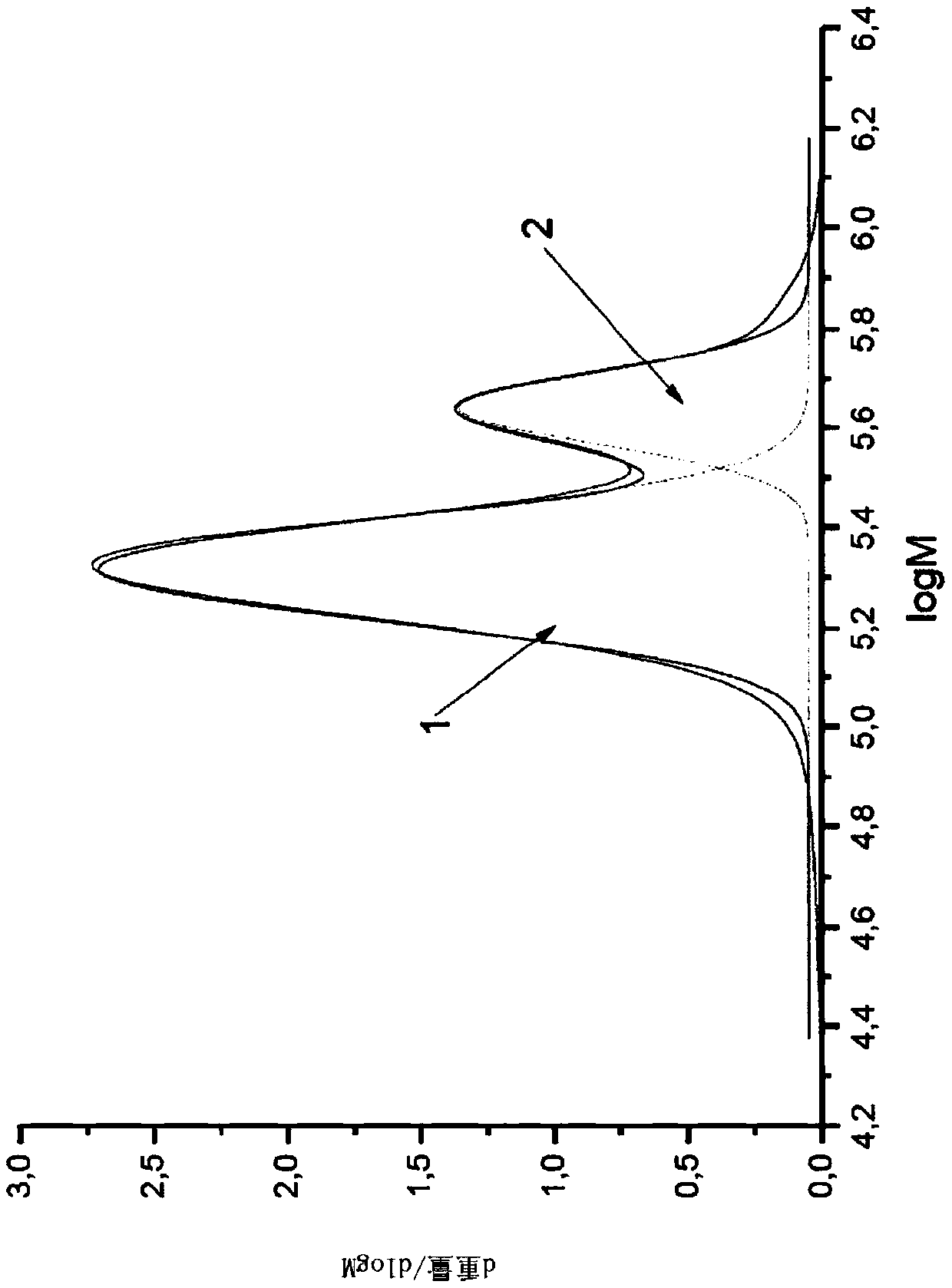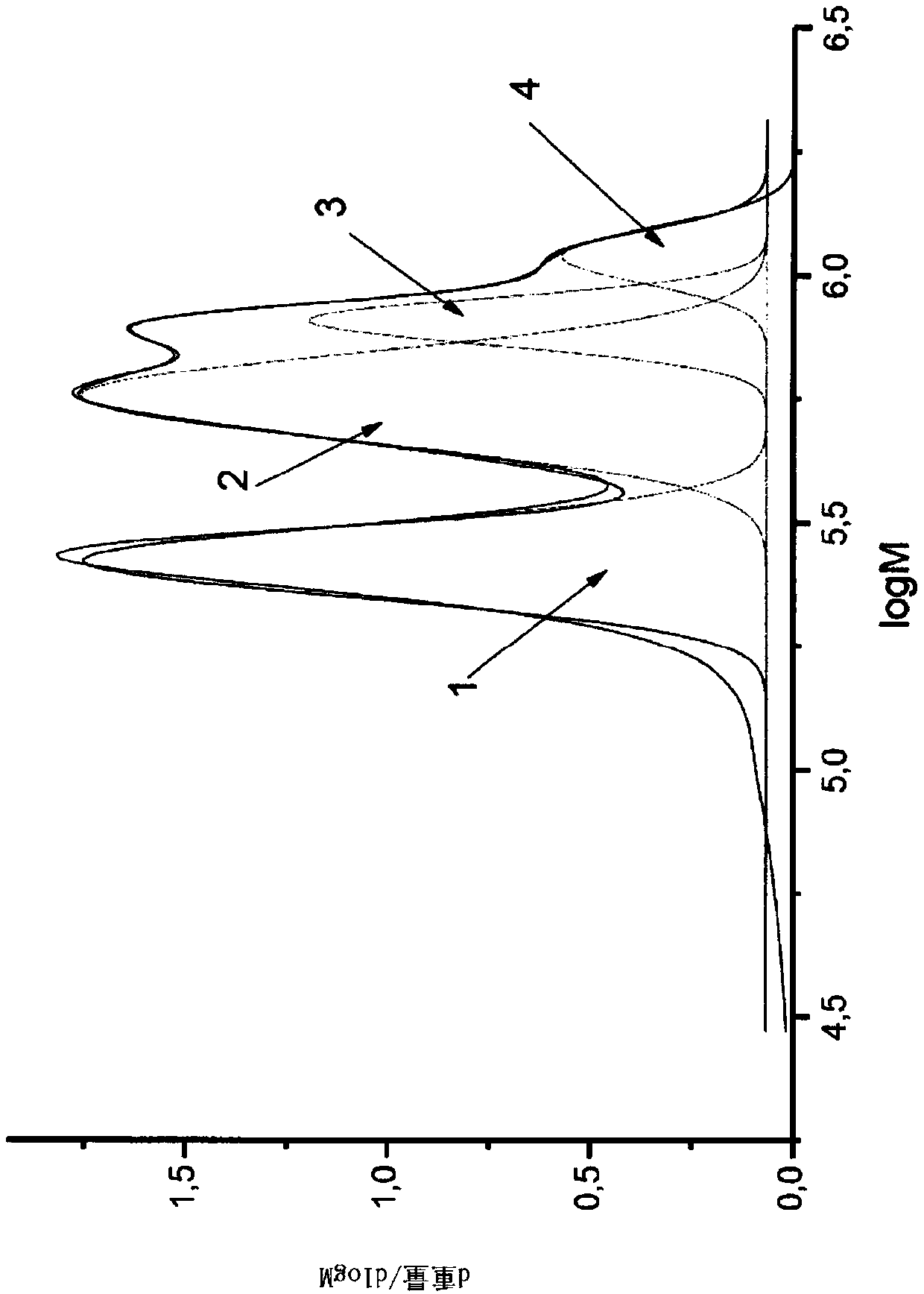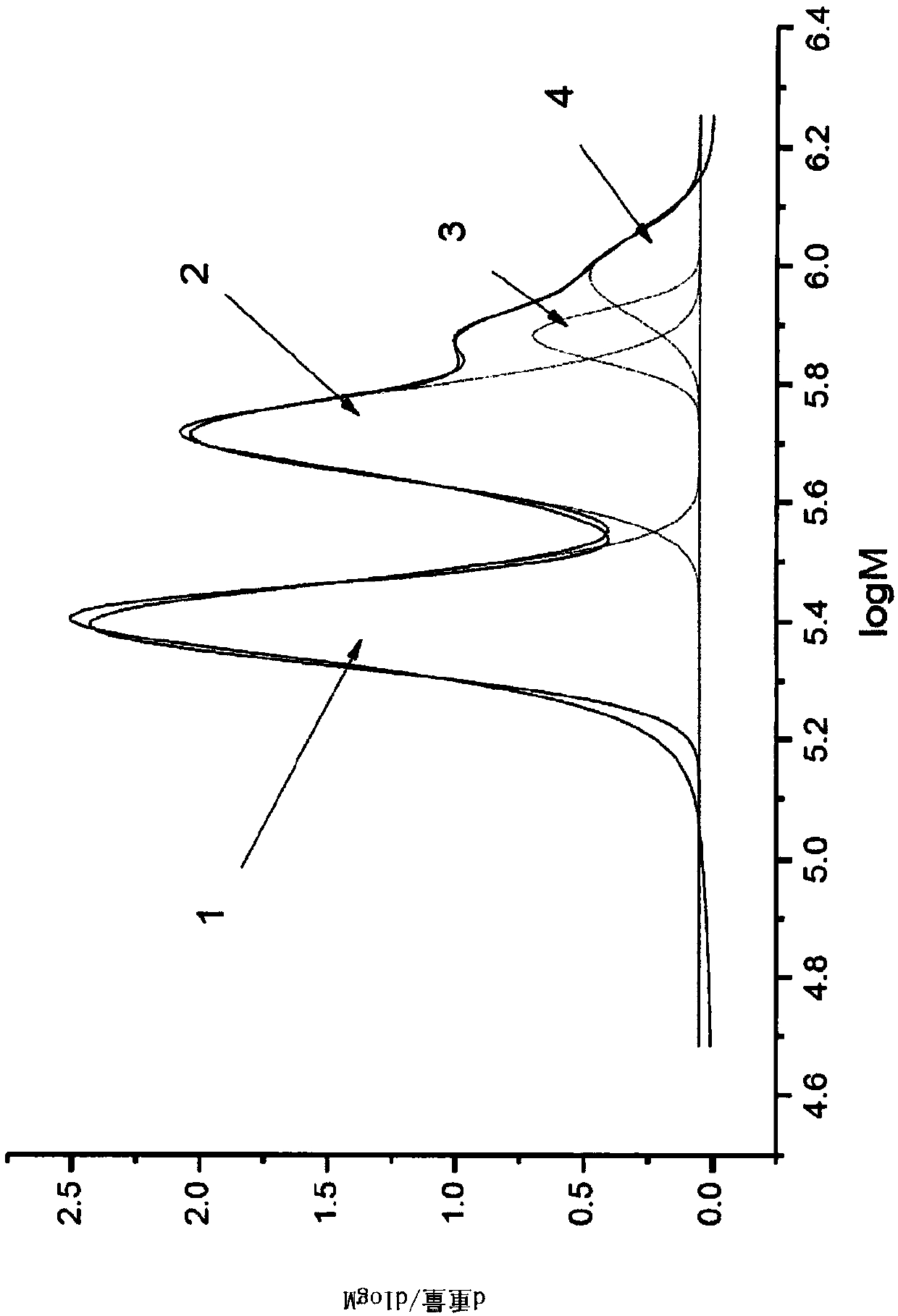A method for producing branched modified rubber and a rubber composition comprising branched modified rubber prepared by the method, and use thereof
A technology of rubber composition and modified rubber, which is applied in the field of production of branched modified rubber, improved comprehensive hysteresis characteristics, and can solve problems such as limiting the selection of vulcanized rubber components
- Summary
- Abstract
- Description
- Claims
- Application Information
AI Technical Summary
Problems solved by technology
Method used
Image
Examples
Embodiment 1
[0096] Example 1. (Comparison, according to prototype) Polymerization in the presence of n-butyllithium and pyrrolidine
[0097] Production of styrene-butadiene rubber in a 2L Buchi reactor with metal cups equipped with stirrer, jacket for temperature control, fittings and specific removable metal for feeding reagents feeder.
[0098] White spirit (984g), butadiene (92.62g), styrene (30.98g), DTHFP (4.0ml) in white spirit (0.32M solution) and 5.95ml white spirit were mixed under the stirrer rotation rate of 50rpm A solution of pyrrolidine (0.2M) was fed to the reactor cooled to -20°C (± 2°C) in nitrogen flow. The stirrer rotation rate was set to 300 rpm, the temperature of the reaction mass was raised to 55° C. at a rate of 7° / min, and when the temperature reached 15° C., 2.88 ml of n-butyllithium in white spirit ( 0.32M solution). After reaching the desired monomer conversion (100%), the polymer was transferred to a cup and filled with the antioxidant Novantox (0.4% by wei...
Embodiment 2
[0100] Example 2. (Comparison, according to prototype) Polymerization in the presence of n-butyllithium and oligosiloxane Coatosil MP-200
[0101] Oligomeric siloxane Coatosil MP-200 has the following structure:
[0102]
[0103] Production of styrene-butadiene rubber in a 2L Buchi reactor with metal cups equipped with stirrer, jacket for temperature control, fittings and specific removable metal for feeding reagents feeder.
[0104] Petroleum solvent (987 g), butadiene (100.6 g), styrene (33.38 g) and DTHFP (2.9 ml) in petroleum solvent (0.32 M solution) were fed into the nitrogen stream at a stirrer rotation rate of 50 rpm Cool the reactor to -20°C (±2°C). The stirrer rotation rate was set to 300 rpm, the temperature of the reaction mass was raised to 55° C. at a rate of 7° / min, and when the temperature reached 15° C., 2.5 ml of n-butyllithium in petroleum solvent ( 0.305M solution). After reaching the desired monomer conversion (100%), the reaction mixture was heated...
Embodiment 3
[0106] Example 3 (comparative, according to prototype) Polymerization in the presence of n-butyllithium and oligosiloxane Silres HP1250
[0107] Oligomeric siloxane Silres HP1250 has the following structure
[0108]
[0109] Styrene-butadiene rubber was prepared according to the procedure described in Example 1, except that the oligosiloxane used was a product under the trade name Silres HP1250, which was added in an amount of 0.3% by weight to the obtained rubber, which uses a 5% toluene solution.
[0110] The properties of the rubber are given in Table 1. The characteristics of the tread rubber obtained from this rubber are shown in Table 2.
PUM
 Login to View More
Login to View More Abstract
Description
Claims
Application Information
 Login to View More
Login to View More - R&D
- Intellectual Property
- Life Sciences
- Materials
- Tech Scout
- Unparalleled Data Quality
- Higher Quality Content
- 60% Fewer Hallucinations
Browse by: Latest US Patents, China's latest patents, Technical Efficacy Thesaurus, Application Domain, Technology Topic, Popular Technical Reports.
© 2025 PatSnap. All rights reserved.Legal|Privacy policy|Modern Slavery Act Transparency Statement|Sitemap|About US| Contact US: help@patsnap.com



